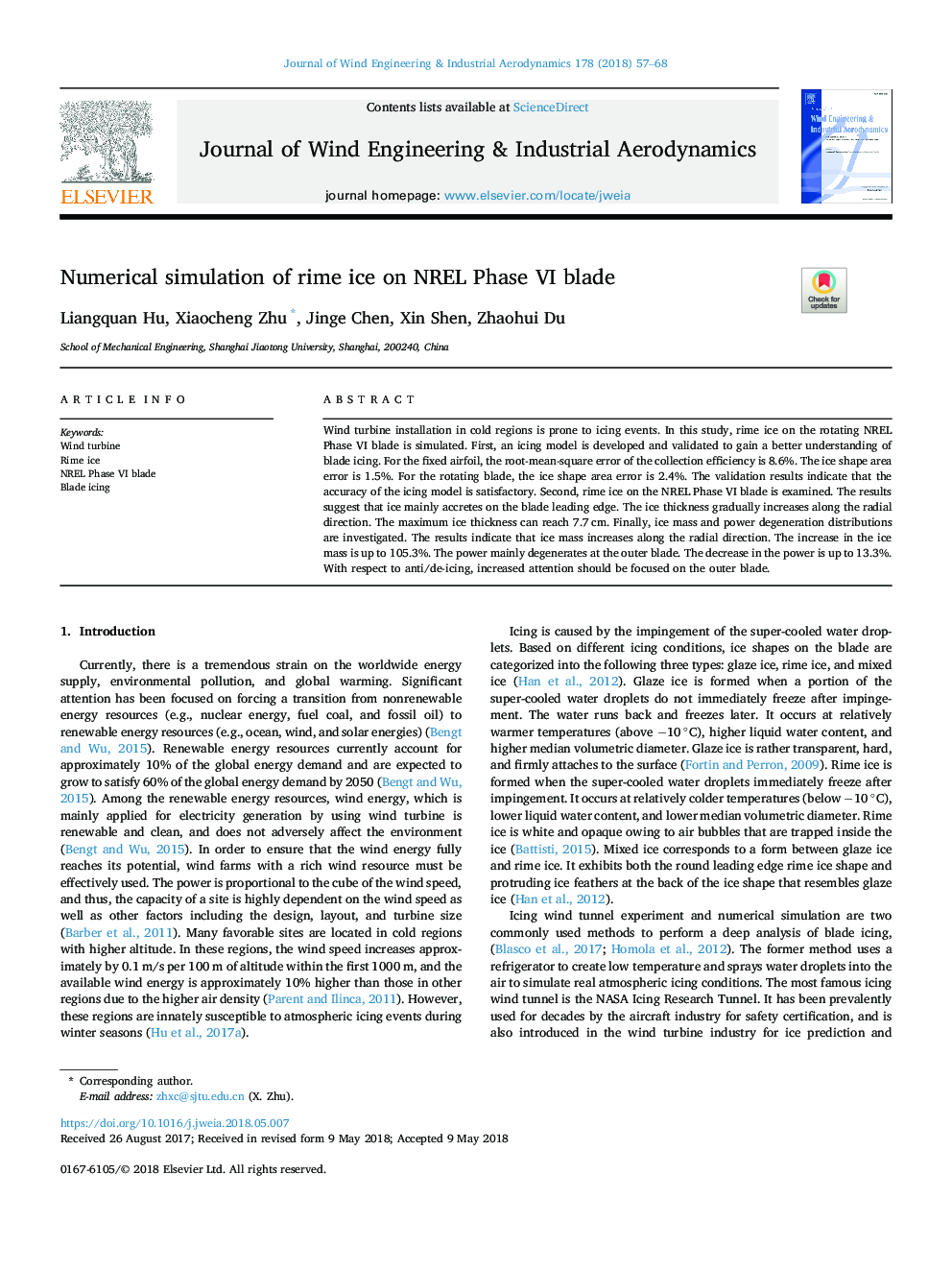| Article ID | Journal | Published Year | Pages | File Type |
|---|---|---|---|---|
| 6756853 | Journal of Wind Engineering and Industrial Aerodynamics | 2018 | 12 Pages |
Abstract
Wind turbine installation in cold regions is prone to icing events. In this study, rime ice on the rotating NREL Phase VI blade is simulated. First, an icing model is developed and validated to gain a better understanding of blade icing. For the fixed airfoil, the root-mean-square error of the collection efficiency is 8.6%. The ice shape area error is 1.5%. For the rotating blade, the ice shape area error is 2.4%. The validation results indicate that the accuracy of the icing model is satisfactory. Second, rime ice on the NREL Phase VI blade is examined. The results suggest that ice mainly accretes on the blade leading edge. The ice thickness gradually increases along the radial direction. The maximum ice thickness can reach 7.7â¯cm. Finally, ice mass and power degeneration distributions are investigated. The results indicate that ice mass increases along the radial direction. The increase in the ice mass is up to 105.3%. The power mainly degenerates at the outer blade. The decrease in the power is up to 13.3%. With respect to anti/de-icing, increased attention should be focused on the outer blade.
Keywords
Related Topics
Physical Sciences and Engineering
Energy
Renewable Energy, Sustainability and the Environment
Authors
Liangquan Hu, Xiaocheng Zhu, Jinge Chen, Xin Shen, Zhaohui Du,
